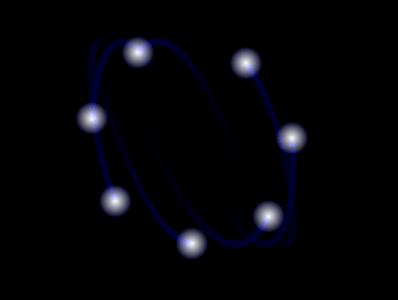Article on our Game Centre at The World. As I recall, I had a “bad soundbite day” when the journalist was visiting, but, well.
Off to Steirischer Herbst in Graz .
My name is Jesper Juul, and I am a Ludologist [researcher of the design, meaning, culture, and politics of games]. This is my blog on game research and other important things.
Article on our Game Centre at The World. As I recall, I had a “bad soundbite day” when the journalist was visiting, but, well.
Off to Steirischer Herbst in Graz .
It was a major revelation when we stumbled upon Richard Bartle’s player type paper a few years ago – imagine being able to discuss such things!
Straightforward copy from Greg Costikyan’s excellent post on the subject. He lists 5 different categorizations of player types:
Ron Edwards: Gamist-Narrativist-Simulationist.
Richard Bartle: Categories of achievers, explorers, socialisers, and killers.
Nick Yee: players who desire relationships, immersion, grief play, achievement, and leadership.
Nicole Lazzaro (at GDC 2004): desire for “internal experience,” for “challenge and strategy,” for “immersion,” and for social experiences.
Richard Rouse: Players want either a challenge, to socialize, a dynamic solitaire experience, bragging rights, an emotional experience, or to fantasize.
Game Design Workshop: At least ten player types: competitors, explorers, collectors, achievers, jokers, artists, directors, storytellers, performers, and craftsmen.
As I recall, Nokia also has a categorization somewhere, but I can’t find it right now.
And I think Greg is right in saying that it’s hard to justify any particular categorization. On the other hand, it’s usually pretty productive to do the attempt – don’t let anyone tell you otherwise.
Mirjam Eliadhari presents her Sims 2 story about the Katt family here.
And yes, it really does work. In Mirjam’s recounting (making-it-into-a-story), it very much becomes some kind of daytime soap – people snapping in and out of love, high drama, and so on. And I guess that soaps just were one of the not-so-talked-about inspirations behind Sims.
The other big inspiration – at GDC Europe 2002, someone proposed that reality TV was one of the things that had paved way for the Sims. And if you think about it, it does look a lot like Big Brother.
Steven Johnson writes about how he recreated his family in Sims 2 only to have “himself” burn to death in an instant.
It wasn’t supposed to be my thing, but I find Sims 2 quite appealing (I would really like to play it instead of having to work now – and much more so than the previous incarnations.
It’s official: Will Wright is the new Emile Zola and the new Aaron Spelling.
It comes from looking too often at the Playstation 2 startup screen: I wondered what the principle was behind the 7 circling dots:

Here’s how it works: The 7 dots simply move around a circle, increasing the distance from each other while the sine and cosine parts of the circle go out of sync (this makes it look like the circle is “turning” in space). Sometimes the dots overlap to give the impression of fewer dots. It’s hard to explain, but I find it extremely cool that they chose to use 7 dots (rather than the more pedestrian 8).
So I recreated it using the new version 6 of wonderful Game Maker (the registered version). Download your own Project file, executable, windowed executable.
Next big indie game after Puzzle Pirates: Kingdom of Loathing.
RPG with saucepans, possessed tomatoes and so on.
Slides from Jon Weinbren’s talk “Is interactive narrative an oxymoron?” at European Developers Forum early September.
That title sounds vaguely familiar, wait, it’s in Andy Cameron’s Dissimulations article from 1995.
[…] the term interactive narrative is an oxymoron
Perhaps it’s time to adopt a cyclical view of history?
Or perhaps it just tells us something basic about the video game medium.
*
More interesting, Warren Spector’s keynote “The Emerging Emergence” threads ground that is becoming familiar (perhaps I’ve been to too many Harvey Smith talks). I am certainly trying to spoon-feed the students at my current game design course with this stuff.
Question: Will discussions of emergence reappear cyclically in the future?
Latest twist in the serious game department: Kuma War is about to launch an episode based on John Kerry’s much-discussed Vietnam heroics.
News.com has a writeup here.
What does a game mean? I wonder if games are persuasive when they represent historical events. After all, the game is likely to have several possible outcomes, and the outcome you want for the John Kerry game probably depends on what outcome would fit your pre-existing convictions?
I don’t exactly have a background in empirical research, but I think it would be really interesting with some studies to see if a game can change people’s minds!
It’s starting to look like a pattern: In order to get into the game industry in a big way, simply create a top-notch mod for a bestselling game.
In this case, Trauma Studios, makers of the Desert Combat mod for Battlefield 1942 has been bought by Digital Illusions.
DIGITAL ILLUSIONS BUYS TRAUMA STUDIOS
Digital Illusions buys New York based game developer Trauma Studios Inc.
Initially Trauma will work with the development of a concept for a new PC game.– Through Desert Combat Trauma showed they are remarkably good at developing products the consumer wants. They understand our technology and are experienced and skillful game developers. This was the major factor to our acquisition, said Patrick S?derlund, CEO at Digital Illusions.
– With Digital Illusions award winning team and Trauma Studios’ talent, I am confident we will be very successful together. We really look forward to being part of the Digital Illusions family, said Frank DeLise, CEO at Trauma Studios Inc.
Digital Illusions buys all assets of Trauma and employ all its employees. Digital Illusions thereby buys the trademarks Desert Combat and Trauma Studios.
Continue reading “Battlefield 1942: Digital Illusions buys Trauma Studios”